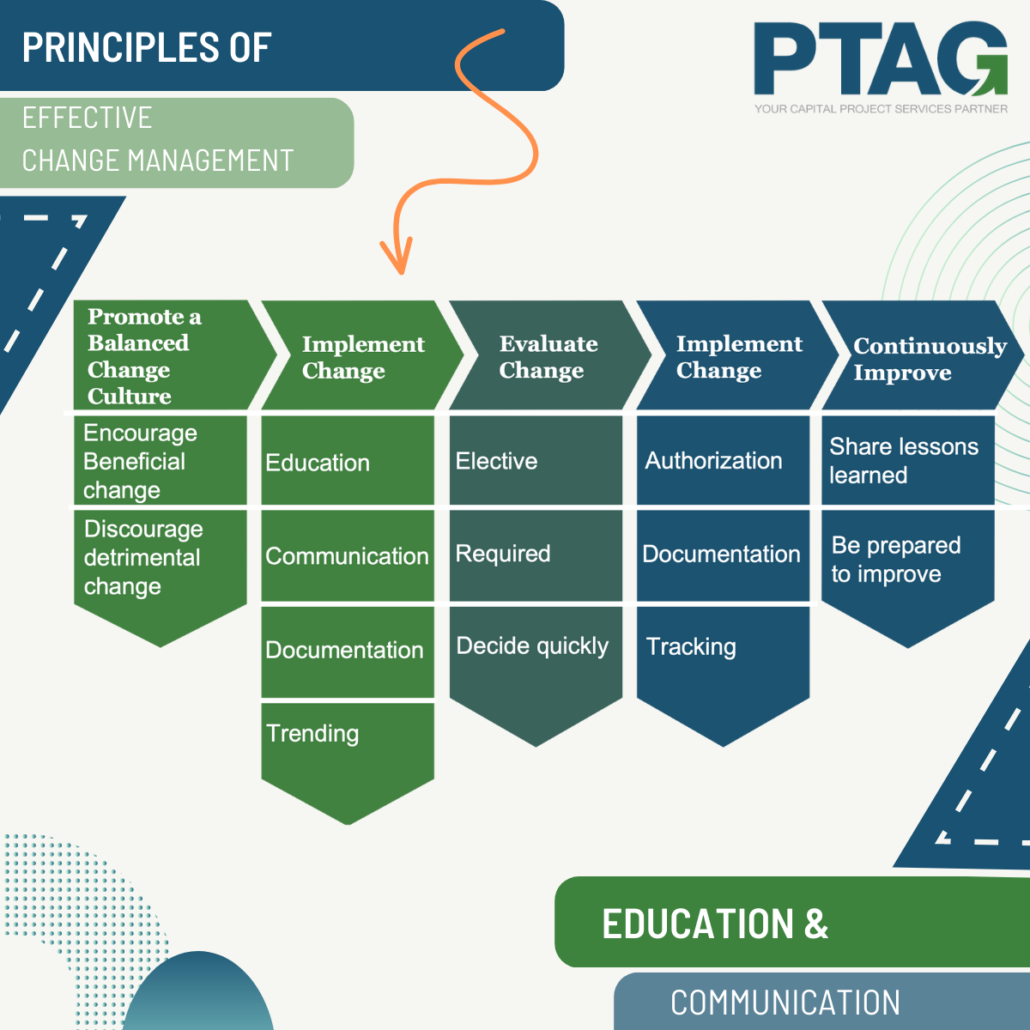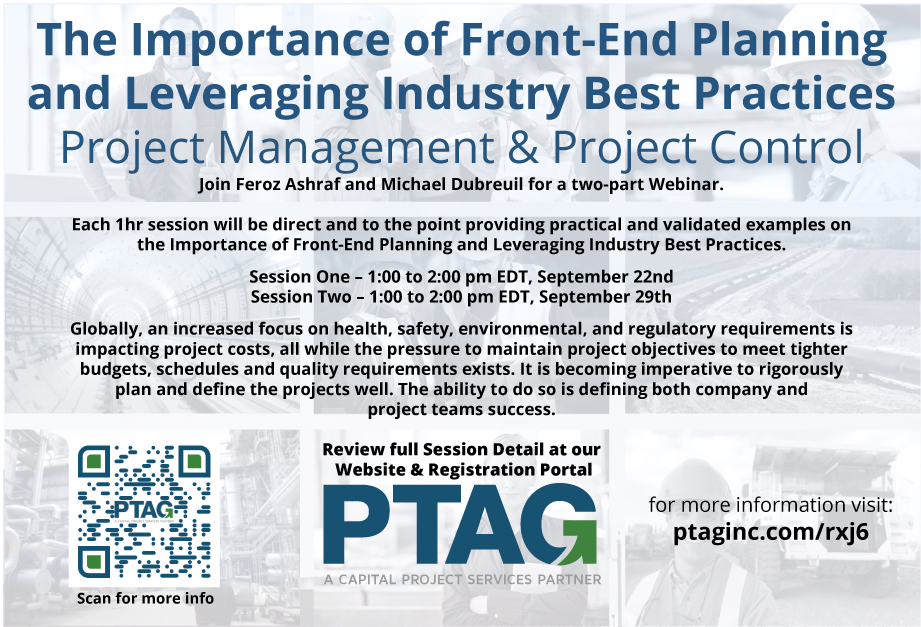November 17th, 2020
10am PST / 11am MST / 12 noon CST / 1pm EST
Join PTAG’s Gulf Coast General Manager Steven K. Hillyard, and principals Feroz Ashraf and Michael Dubreuil for a special 90min webinar on How to plan and execute Capital Projects in volatile and uncertain times. This extended 90min webinar will be direct and to the point providing practical and validated examples pertinent to planning and restarting your capital projects.
Throughout the United States and Canada, most capital project budgets have been cut. With few exceptions, no region has gone untouched by the impact that COVID has had on those of us working on capital projects.
The need to maintain existing facilities still exists. Capital spend is still needed to maintain operability, safety, and capacity. Commodity demand is still increasing.
Project teams have been reduced by 30% or more. Across the board our clients are seeing increases in material and equipment costs due to COVID, with continued commodity price volatility driving new behaviours.
Projects are experiencing significant productivity impacts due to the new normal COVID working conditions, as well as increasing pressure and social license related to climate change.
Our panel of seasoned capital project practitioners will walk through these issues with practical step by step approaches and strategies covering delivery models, best practices in detail for both the Planning and Execution phases of new projects and refurbishments.
Our webinar sessions are part of PTAG’s ongoing webinar series on Best Practises in Project Management & Project Controls. PTAG works with sustaining and capital projects owners around the world and is passionate about ensuring the successful delivery of every project, especially in today’s volatile and uncertain conditions.
Please register for access to post webinar session video and Q&A even if you will not be able to attend on our schedule date.


